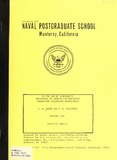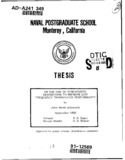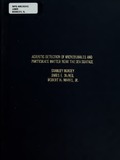Evaluation of a standing wave system for determining the presence and acoustic effect of microbubbles near the sea surface.
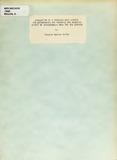
Download
Author
Keller, Douglas George
Date
1968-06Advisor
Medwin, H.
Metadata
Show full item recordAbstract
That bubbles affect sound propagation in the ocean
has long been known. However,, quantitative data on the
concentrations and distribution of bubbles near the surface
of the ocean is not available. A one-dimensional,
high Q, standing wave system was constructed and evaluated
to determine bubble concentrations by measuring the effect
of bubbles on the system Q's. It was tested to depths of
40 feet and in the frequency range of 10-100 kHz. This
system used a mylar electrostatic transducer as the
sound source and also as one of the reflectors. System
Q's of 3500 were obtained. It was possible to measure
attenuation to t 0,019 db/m above 20 kHz. Hydrostatic pressure caused variations in the face of the transducer
thereby making the system unstable. The mylar transducer
is therefore unsuitable for use as both source and
reflector. Initial investigations made into using the mylar
transducer to externally excite a reflector-reflector
system are also described.
Rights
This publication is a work of the U.S. Government as defined in Title 17, United States Code, Section 101. Copyright protection is not available for this work in the United States.Collections
Related items
Showing items related by title, author, creator and subject.
-
On the use of sympathetic resonators to improve low-frequency underwater transducer performance
Baker, Steven R.; Ellsworth, John Merle (Monterey, California. Naval Postgraduate School, 1991-10); NPS-PH-92-002The achievable gain in the radiation resistance and directivity of a low-frequency underwater transducer due to the presence of an array of sympathetic resonators has been analyzed. The resonators were all taken to be air ... -
On the use of sympathetic resonators to improve low frequency transducer performance
Ellsworth, John Merle (Monterey, California: Naval Postgraduate School, 1990-09);The achievable gain in the radiation resistance and directivity of a low frequency underwater transducer due to the presence of an array of sympathetic resonators was analyzed. The resonators were all taken to be air ... -
Acoustic detection of microbubbles and particulate matter near the sea surface
Buxcey, Stanley; McNeil, James E.; Marks, Robert H. (1965);A pulse-echo system using an electrostatic transducer and steel reflector was operated over the frequency range 24-192 Kcps in the sea and in the laboratory. Excess attenuations from 0.15 to 1.1 db/M due to absorption ...
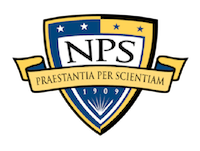

 evaluationofstan00kell.pdf (2.510Mb)
evaluationofstan00kell.pdf (2.510Mb)